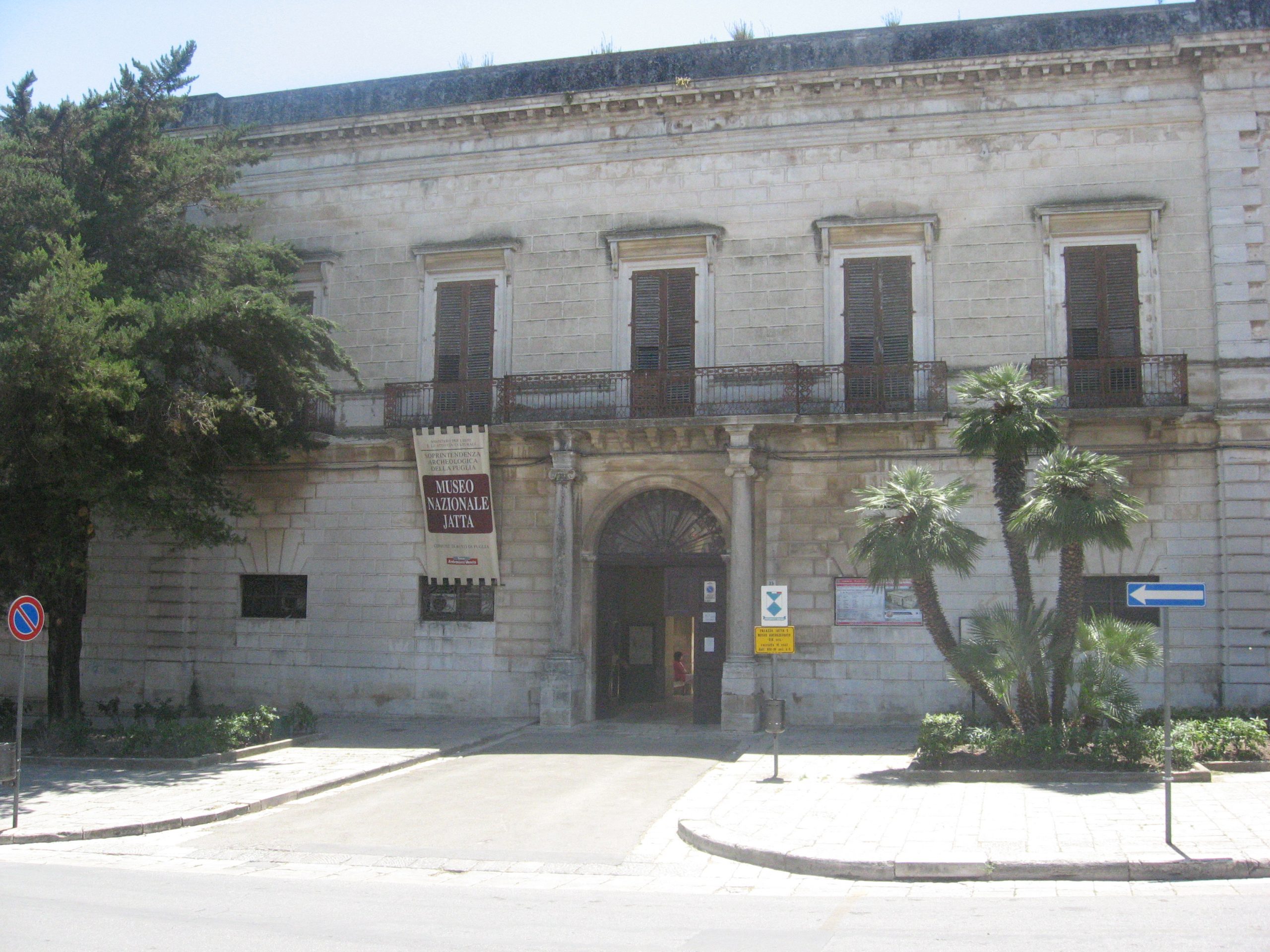
RUVO DI PUGLIA
CATHEDRAL OF SANTA MARIA ASSUNTA
Ruvo di Puglia is an important rural centre in Apulian Murgia. Its origin dates back to the times of the Peucetians, an ancient Italian people that had settled in Apulia by the 7th century BC.
The importance of this town, which was a Roman municipium and the seat of one of the first dioceses in the region, lies in its strategic location along the Via Traiana. In fact, Ruvo was a stopover on the road coming from Benevento.
In the nice Medieval old town, characterized by an intricate system of alleys and passageways, one of the most beautiful cathedrals in Puglia rises. This 13th-century church still fascinates the traveler thanks to its singular elevation with very slanting slopes, the richly decorated main portal, and in particular the large twelve-ray rose window that opens on the main façade. The small hanging arches that ornate the church hut profile are enriched with carved shelves with plant motifs and clearly classical-inspired animal and human heads. Probably local sculptures got inspiration from the various classical vases and finds that Ruvo’s soil returned profusely, since in ancient times the town was one of the most important center in the Apulian pottery production.
The church interior has a basilica plan with three naves terminating in as many semicircular apses.
Speaking to the sexton and paying a symbolic sum rather than a real ticket, it is possible to visit the church hypogeum, which allows the tourist to make an ideal journey back to Ruvo’s past, up to the Neolithic age, thanks to the finds here preserved and the archaeological evidence found, including ancient tombs and remains of prior sacred buildings dating back to the early centuries of Christianity.

Ruvo di Puglia, Cathedral
(author: Sailko – Own work, CC BY 3.0, https://commons.wikimedia.org/w/index.php?curid=59430789)
THE JATTA MUSEUM

Ruvo, Palazzo Jatta, author: Cunhal94 is licensed under CC BY-SA 3.0
<p style=”font-size: 0.9rem;font-style: italic;”><a href=”https://commons.wikimedia.org/w/index.php?curid=19759736″>”File:Palazzo Jatta Ruvo di Puglia.JPG”</a><span>by <a href=”https://commons.wikimedia.org/wiki/User:Cunhal94″>Cunhal94</a></span> is licensed under <a href=”https://creativecommons.org/licenses/by-sa/3.0/?ref=ccsearch&atype=html” style=”margin-right: 5px;”>CC BY-SA 3.0</a><a href=”https://creativecommons.org/licenses/by-sa/3.0/?ref=ccsearch&atype=html” target=”_blank” rel=”noopener noreferrer” style=”display: inline-block;white-space: none;opacity: .7;margin-top: 2px;margin-left: 3px;height: 22px !important;”><img style=”height: inherit;margin-right: 3px;display: inline-block;” src=”https://search.creativecommons.org/static/img/cc_icon.svg” /><img style=”height: inherit;margin-right: 3px;display: inline-block;” src=”https://search.creativecommons.org/static/img/cc-by_icon.svg” /><img style=”height: inherit;margin-right: 3px;display: inline-block;” src=”https://search.creativecommons.org/static/img/cc-sa_icon.svg” /></a></p>
We cannot leave Ruvo without visiting the Jatta Museum, not only for the rich heritage of Apulian vases it hosts, but also for the setting in which they are displayed: the Neoclassical-style palace named Palazzo Jatta. The museum is one of the few examples in Italy of a private collection, which was assembled between 1820 and 1935, remained intact and was set up in a late nineteenth-century style.
It hosts a valuable collection made up of more than two thousand vases, found in Ruvo thanks to the effort made by Giovanni Jatta and his family and their passionate archaeological research. The Jatta family wanted to put an end to the habit of sacking tombs and sepulchers for market and speculation purposes, hence they started to purchase artifacts from antique dealers and lead excavating campaigns, saving most of the territory historical heritage from grave robbers and smugglers. The precious family collection is the Jatta Museum collection. One of the most valuable pieces is an Attic krater dating back to the end of the 5th century BC and located in room 4. The vase depicts a scene from the Argonautica by Apollonius Rhodius, Talos’ death. We can see the elegantly painted figure of the giant who falls, supported by one of the Dioscuri, due to Medea’s spell.

Ruvo, Jatta Museum, the vase of Talos (author: julianna.lees is licensed under CC BY-NC-SA 2.0 )
<p style=”font-size: 0.9rem;font-style: italic;”><a href=”https://www.flickr.com/photos/27305838@N04/14257714594″>”Museo Jatta – Jatta Museum, Ruvo, Ceramics of Magna Graecia”</a><span>by <a href=”https://www.flickr.com/photos/27305838@N04″>julianna.lees</a></span> is licensed under <a href=”https://creativecommons.org/licenses/by-nc-sa/2.0/?ref=ccsearch&atype=html” style=”margin-right: 5px;”>CC BY-NC-SA 2.0</a><a href=”https://creativecommons.org/licenses/by-nc-sa/2.0/?ref=ccsearch&atype=html” target=”_blank” rel=”noopener noreferrer” style=”display: inline-block;white-space: none;opacity: .7;margin-top: 2px;margin-left: 3px;height: 22px !important;”><img style=”height: inherit;margin-right: 3px;display: inline-block;” src=”https://search.creativecommons.org/static/img/cc_icon.svg” /><img style=”height: inherit;margin-right: 3px;display: inline-block;” src=”https://search.creativecommons.org/static/img/cc-by_icon.svg” /><img style=”height: inherit;margin-right: 3px;display: inline-block;” src=”https://search.creativecommons.org/static/img/cc-nc_icon.svg” /><img style=”height: inherit;margin-right: 3px;display: inline-block;” src=”https://search.creativecommons.org/static/img/cc-sa_icon.svg” /></a></p>
The Jatta Museum is located in Ruvo, Piazza Bovio 35.
Opening times: Monday-Friday: 8.30 a.m. – 1.30 p.m.; Saturday: 2.30 p.m. – 7.30 p.m.; Sunday: 8.30 a.m. – 1.30 p.m. (First and third Sunday of each month)